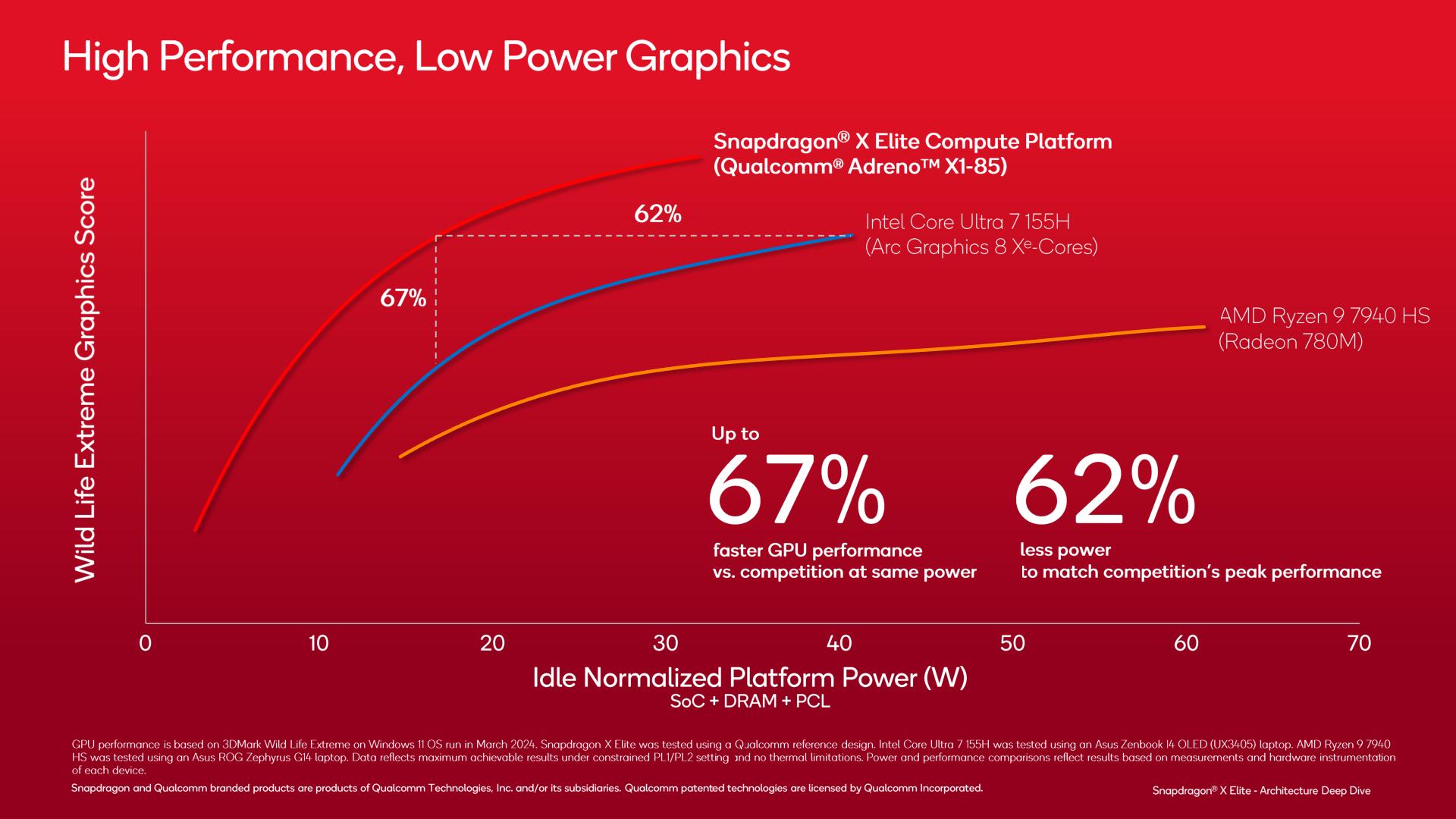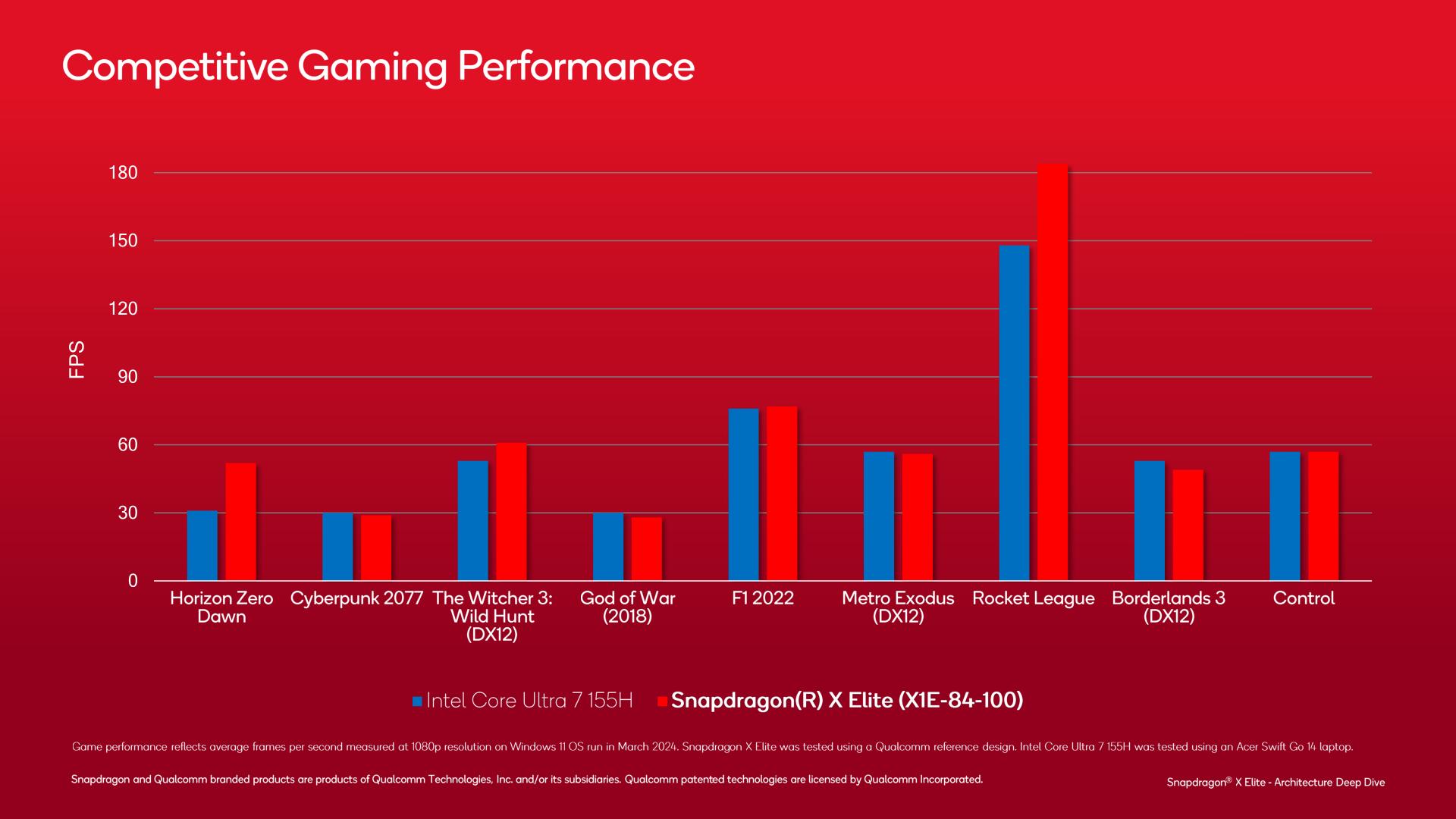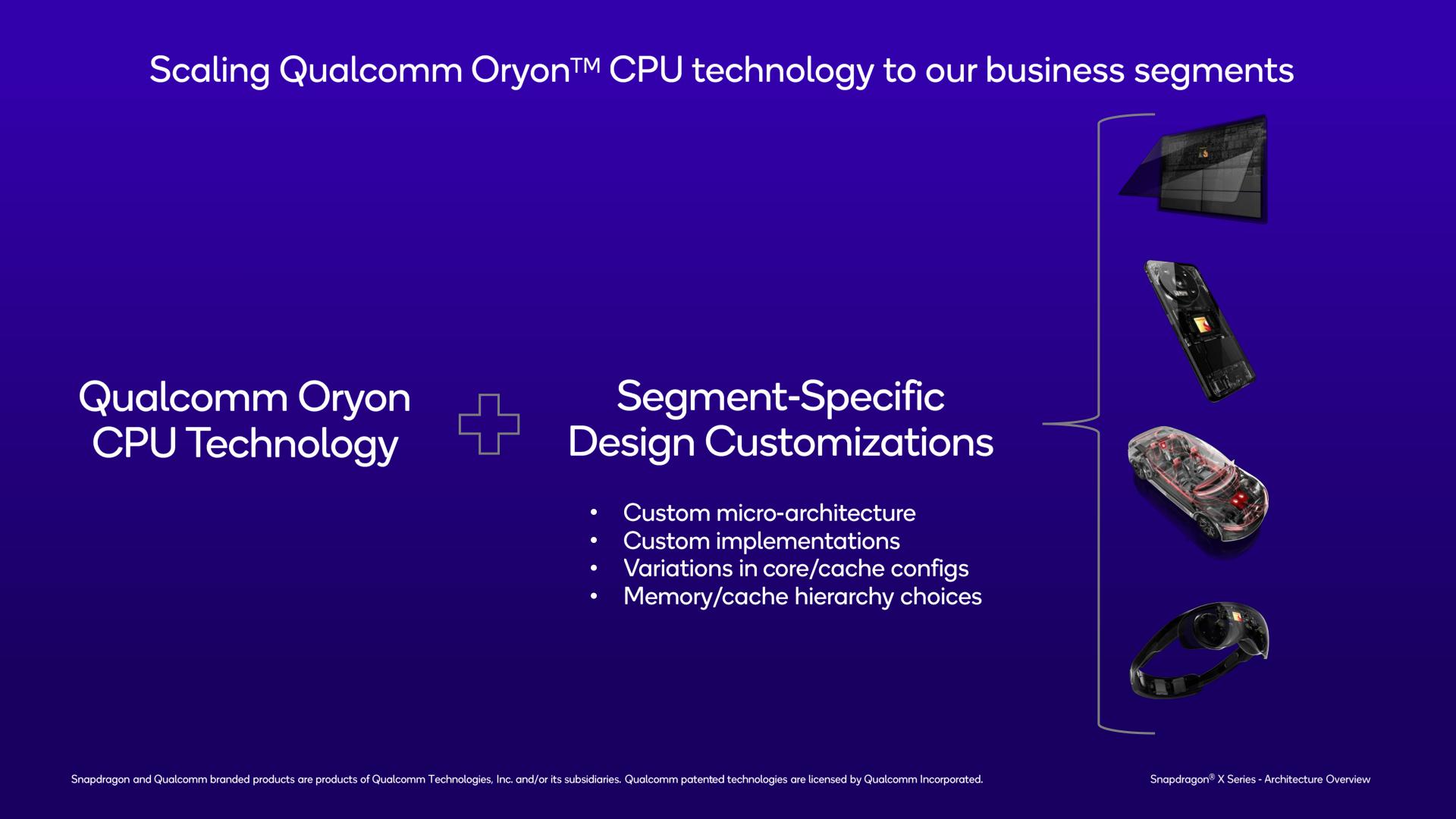The Qualcomm Snapdragon X Architecture Deep Dive: Getting To Know Oryon and Adreno X1
by Ryan Smith on June 13, 2024 9:00 AM ESTPerformance Promises and First Thoughts
Wrapping things up, let’s touch upon a couple of Qualcomm’s performance slides before closing out this architectural deep dive. While the whole world will get to see what the Snapdragon X can do first-hand next week when retail devices launch, until then it gives us a bit more insight into what to expect. Just be sure to take it with the requisite grain of salt.
On the CPU side of matters, Qualcomm is claiming that the Snapdragon X Elite can beat the entire field of contemporary PC competitors in GeekBench 6.2 single-threading. And by a significant degree, too, when power efficiency is taken into account.
In short, Qualcomm claims that the Oryon CPU core in the Snapdragon X Elite can beat both Redwood Cove (Meteor Lake) and Zen 4 (Phoenix) in absolute performance, even if the x86 cores are allowed unrestricted TDPs. With mobile x86 chips turboing as high as 5GHz it’s a bold claim, but not out of the realm of possibility.
Meanwhile on the GPU front, Qualcomm is making similar energy efficiency gains. Though the workload in question – 3DMark WildLife Extreme – is not likely to translate into most games, as this is a mobile-focused benchmark that has long been optimized to heck and back within every mobile SoC vendor’s drivers.
Performance benchmarks using actual games are arguably more useful here. And even though Qualcomm is probably doing some cherry-picking, the top Snapdragon X SKU is often trading blows with Intel’s Core Ultra 7 155H. It admittedly makes for a less impressive showing overall, but it’s good to see where Qualcomm is currently landing on real games. And in this case, even just a mix of ties/beats of one of Intel’s better mobile chips is not a bad showing.
First Thoughts
And there you have it, our first deep dive into a Qualcomm Snapdragon X SoC architecture. With Qualcomm investing into the Windows-on-Arm ecosystem for the long haul, this will hopefully be the first of many, as the company seeks to become the third major Windows CPU/SoC vendor.
But the ultimate significance of the Snapdragon X SoC and its Oryon CPU cores goes beyond just mere SoCs for PC laptops. Even if Qualcomm is wildly successful here, the number of PC chips they’ll ship will be a drop in the bucket compared to their true power base: the Android SoC space. And this is where Oryon is going to be lighting the way to some significant changes for Qualcomm’s mobile SoCs.
As noted by Qualcomm since the start of their Oryon journey, this is ultimately the CPU core that will be at the heart of all of Qualcomm’s products. What starts this month with PC SoCs will eventually grow to include mobile SoCs like the Snapdragon 8 series, and farther along still will be Qualcomm’s automotive products, and high-end offshoots like their XR headset SoCs. And while I doubt we’ll really see Oryon and its successors in Qualcomm’s product in a true top-to-bottom fashion (the company needs small and cheap CPU cores for their budget lines like Snapdragon 6 and Snapdragon 4), there is no doubt that it’s going to become a cornerstone of most of their products over the long run. That’s the value of differentiation of making your own CPU core – and getting the most value out of that CPU core by using it in as many places as possible.
Ultimately, Qualcomm has spent the last 8 months hyping up their next-generation PC SoC and its bespoke CPU core, and now it’s time for all of the pieces to fall into place. The prospect of having a third competitor in the PC CPU space – and an Arm-baesd one at that – is exciting, but slideware and advertising aren’t hardware and benchmarks. So we’re eagerly awaiting what next week will bring, and seeing if Qualcomm’s engineering prowess can live up to the company’s grand ambitions.




















52 Comments
View All Comments
Terry_Craig - Thursday, June 13, 2024 - link
Almost a year and all Qualcomm throws at the public is more slides and marketing material? Where are the third-party reviews?Ryan Smith - Thursday, June 13, 2024 - link
Next week.mukiex - Thursday, June 13, 2024 - link
Ryan, I legit appreciate the "A Note on x86 Emulation" section. Literally answered the biggest questions I had on this that nobody else has covered, as far as I can tell. 10/10.Terry_Craig - Thursday, June 13, 2024 - link
Finally... Finally... I was also tired of just seeing marketing stuffabufrejoval - Thursday, June 20, 2024 - link
I think the usual benchmark stuff has been covered sufficiently by now.The only remaining question for me is battery life and there specifically where it might really differ from existing x86 laptops.
From what I remember reading the SoC itself has become somewhat of a minor energy consumption player on light desktop loads, which is how most professional computer users spend time in front of a screen. So I don't even know if there is enough wiggle room for a 2-3x battery time improvement without going to passive displays and really slow low-power storage.
What it comes down to is mostly this question: do I need to take the charger into my all-day meeting or can I even leave it at home when I go on a week-long busines trip?
And can I forget about my power button actually be a power button like on my phone, where most of the time it's used for things like camera control.
Pretty sure it won't be the week-long trip just yet, but not bothering with chargers for all-day meetings seems to have been a major win for the fruity cult.
And somewhere in between those two is the question of how low the Snapdragons will go in lid-down mode, which could be suspend to RAM or even some usable kind of modern standby where e.g. voice commands or messenger actions might still be processed with something ultra-low power. And there the main quality benchmark would be how quickly you can resume normal operations without e.g. draining 10 minutes of idle battery for one resume.
From what I read between the lines of your deep dive, the granularity at which large swaths of the SoCs transistors could go and remain dark might be vastly better than with x86 designs and their iGPUs. And its the ability to tickle adequate responsiveness from phone wattages that would make a Snapdragon PC worth having, not it's ability to beat x86 on Cinebench.
Cinebench on an RTX 4090 makes it rather clear that any investment into CPU power for that use case is plain folly.
TheProv - Monday, July 1, 2024 - link
Hey Ryan are you guys doing a review?yeeeeman - Thursday, June 13, 2024 - link
yeah, also getting a bit tired of this hype hype hype.they kinda did this in their disadvantage tbh.
meacupla - Thursday, June 13, 2024 - link
They are launching on June 18th, so the review embargo probably lifts on the 17th or 18th.Dante Verizon - Tuesday, June 18, 2024 - link
Apparently not.shabby - Thursday, June 13, 2024 - link
Some benchmarks are leaking out, prepare to be disappointed https://www.tomshardware.com/laptops/snapdragon-x-...